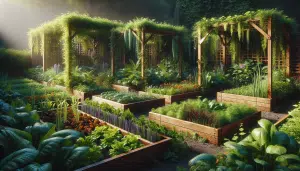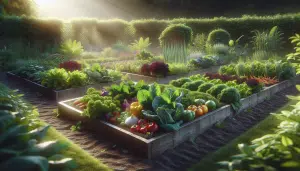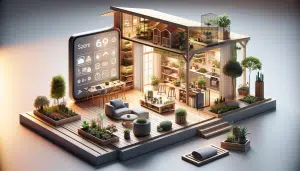Secrets to Making Indoor Plants Thrive All Year
Lily Carter September 25, 2025
Curious about how to boost your home’s mood and air quality with indoor plants? Discover practical tips on plant care, lighting, soil, and more so your greenery can flourish in every season—no green thumb required.
Understanding the Needs of Indoor Plants
Indoor plant care starts with understanding each plant’s unique requirements to help them truly thrive indoors. Some plants love bright, direct light; others favor low, indirect light. By matching the plant’s natural habitat, you’ll cultivate stronger, more vibrant greenery. Indoor gardening is much easier when you pay attention to a plant’s original ecosystem and adapt your home environment using proper lighting, watering schedules, and humidity control. For example, succulents and cacti that originate in arid regions require far less water and more direct sunlight, while ferns native to forests prefer shade and consistent moisture. Start by observing your specific plant types; even within the indoor potting world, expectations can vary widely. Over time, you’ll see your plants communicating through leaf color, shape, or droopiness—these are signals of their needs.
Setting the right indoor environment encourages healthy plant growth and discourages common problems like wilting or yellowing. Key elements such as air circulation, humidity, and access to natural light should not be overlooked. Even temperature plays a large part; most houseplants are happiest between 65°F and 75°F. Fluctuations outside this range can stress plants, sometimes causing leaves to brown or drop. Simple adjustments, like moving a plant away from drafty windows in winter or shielding it from intense summer sun, can help maintain stability. It’s essential to monitor the microenvironment around your plant’s spot—sometimes just turning the pot a few inches can balance light exposure or air flow. Over time, tuning in to these micro-adjustments makes indoor plant care second nature.
Understanding how plants respond to care routines is surprisingly satisfying. When you see new growth, brighter leaves, or seasonal blooms, it’s a sign the plant is thriving. Remember, patience is a fundamental part of being a successful indoor gardener. Sometimes, changes don’t take effect right away, but establishing consistent care habits yields impressive results in the long run. Keep a gentle hand and a curious mind—observe, experiment, and celebrate small wins like a fresh leaf or root sprout. As you connect with your plants, you foster not only their health but also your own mindfulness and appreciation for nature indoors.
Matching Indoor Lighting to Plant Types
Lighting is often the difference between a droopy plant and a lush one, making it one of the most important factors in houseplant care. Natural light inside homes shifts throughout the day and year, and understanding its intensity helps you choose the best spot for each plant. South-facing windows deliver the most sunlight, ideal for succulents, cacti, and flowering houseplants that crave brightness. In contrast, north-facing windows offer more gentle, indirect light, which many foliage plants like pothos, philodendron, and ferns prefer. Track the sun’s movement and notice how shadows change—these patterns influence where to place your indoor greenery.
Sometimes, homes simply don’t offer enough natural light for specific plant species to flourish all year. In these cases, artificial grow lights become game-changers. LED grow lights can mimic the natural daylight spectrum and can be tailored in strength or length of exposure, allowing nearly any indoor plant to prosper regardless of the season or window access. Grow lights are particularly useful in wintertime or in urban settings where buildings can block sun. Select lights that offer full-spectrum output, as these most closely mimic real sunlight. Position your light source the correct distance from plant leaves—too close may cause scorching, while too far means insufficient energy for growth.
Signs of incorrect lighting include yellowed leaves, leggy stems, or lack of growth. Monitor these cues and try repositioning pots or switching out light bulbs accordingly. Some houseplants even rotate their leaves to reach available sunlight, hinting at their preferences. By understanding lighting requirements—both natural and supplemental—you’ll empower every leafy resident to fulfill its potential indoors. Investing in light meters or using smartphone apps can also provide insight into dim corners, helping you optimize each plant’s position for healthier, happier growth.
The Right Soil and Repotting Techniques
Soil is the foundation of any indoor plant’s health—a quality potting mix ensures roots can breathe, access nutrients, and grow strong. The best soil varies by plant species: succulents and cacti need fast-draining, sandy soil, while tropicals favor peat-rich mixes that hold moisture. Many generic potting soils work for most houseplants, but boosting them with perlite or orchid bark can promote root aeration and drainage, reducing root rot risks. Examine your plant’s original growing environment for clues when choosing the right soil. If you notice compacted or waterlogged soil, it may be time to repot. Healthy soil translates to vibrant plants.
Repotting isn’t simply an aesthetic task—it’s essential for plant vitality and long-term sustainability. Most plants benefit from being repotted every one to two years or whenever roots begin to circle the pot or emerge from the drainage holes. Gently loosen and trim roots as needed to encourage fresh growth, and always select a container slightly larger than the previous one. Remember to water thoroughly after repotting to settle the new soil and minimize transplant shock. Repotting also provides an opportunity to check for pests, prune dead leaves, and refresh the growing environment for the next growth phase.
Signs your plant may need fresh soil or a new pot include stunted growth, rapid drying between waterings, or a lingering musty odor. Learning to recognize these indicators makes you a much more intuitive indoor gardener. Establish a repotting schedule, inspect your plants regularly, and embrace the flexibility to adjust your routine as each variety dictates. Ultimately, the combination of the right soil and repotting techniques builds a strong foundation, helping indoor plants adjust to seasonal changes or stressful events so they can continue to thrive all year long.
Mastering Watering and Humidity Control
Watering is both art and science, and one of the most common stumbling blocks for plant owners. Overwatering remains the number one cause of houseplant decline, as it suffocates roots and fosters fungal growth. Most indoor plants are more tolerant of underwatering than waterlogged conditions. The key is to check soil moisture before watering—if the top inch feels dry, water thoroughly until it drains out the bottom. Avoid letting your plant sit in standing water. Experiment with watering frequency, adjusting based on plant type, seasonal changes, and pot size rather than sticking to a fixed schedule.
Humidity plays an important but often overlooked role in plant care, especially for tropical plants that evolved in rainforest environments. In winter, indoor heating systems can dry out the air, causing leaf edges to brown or crisp. To counteract this, group humidity-loving plants together, mist them gently, or place shallow trays of water nearby. Some plant enthusiasts use humidifiers to create a stable, lush microclimate. Leaf shine and perky new growth often indicate your humidity levels are just right. Over doing it, however, can invite mold, so monitoring is key. Observe closely to strike the ideal humid balance for your home.
Water quality can also impact plant success. Some sensitive species react poorly to hard water or high chlorine levels. If you notice persistent issues like leaf tip burn or unexpected discoloration, try watering with filtered or distilled water to see if it makes a difference. Watering and humidity adjustments may seem minor, but they have a big impact on long-term plant health and overall resilience, especially during extreme indoor climate changes throughout the year. By listening to your plants—through subtle changes in appearance—you’ll master their preferences and strengthen your indoor garden’s vitality.
Fertilizing and Long-Term Indoor Plant Care
Beyond water and light, nutrients are essential for robust plant health, and regular fertilization supports long-term growth. Most houseplants benefit from a balanced, water-soluble fertilizer applied every four to six weeks during active growing seasons. Choose a fertilizer that matches your plant family—leafy foliage types do well with nitrogen-rich blends, while flowering species require more phosphorous and potassium. Over-fertilizing can lead to nutrient burn and weak roots, so always follow package guidelines. Fertilizers replenish soil nutrients depleted over time, helping your indoor plants produce lush leaves and beautiful blooms. Observe growth rates and modify feeding schedules as needed.
Long-term care means anticipating seasonal fluctuations, shifting pot locations, adjusting feeding routines, and continually checking for common issues like pests or fungal spots. Implementing a long-term care calendar—marking dates for feeding, pruning, and repotting—can keep your plants thriving all year. Make plant inspection a weekly habit; early detection of stress or disease leads to simpler interventions. Remember, houseplants are living companions—their well-being often mirrors the level of attention they receive. Small acts like wiping leaves to remove dust or rotating pots for even sun exposure boost overall plant vigor and beauty.
Indoor plants can live for many years with basic maintenance, providing benefits for health, air quality, and ambiance. Advanced projects, such as propagating new plants from cuttings or experimenting with rare varieties, can further enrich the indoor gardening experience. Support your plants with patience and curiosity, and you’ll be rewarded with a lush, thriving indoor oasis that feels fresh through every season. The journey is ongoing; each year brings new lessons to discover and enjoy in your home garden sanctuary.
References
1. The Old Farmer’s Almanac. (n.d.). Growing Houseplants Indoors. Retrieved from https://www.almanac.com/gardening/growing-guides/houseplants
2. Penn State Extension. (n.d.). Houseplant Care: A Guide to Growing Healthy Indoor Plants. Retrieved from https://extension.psu.edu/houseplant-care-a-guide-to-growing-healthy-indoor-plants
3. University of Georgia Extension. (n.d.). Growing Indoor Plants with Success. Retrieved from https://extension.uga.edu/publications/detail.html?number=B1318
4. University of Florida IFAS Extension. (n.d.). Basic Care of Houseplants. Retrieved from https://edis.ifas.ufl.edu/publication/EP021
5. Royal Horticultural Society. (n.d.). Houseplant Watering and Feeding. Retrieved from https://www.rhs.org.uk/houseplants/watering-feeding
6. The Spruce. (2022). How to Repot a Houseplant. Retrieved from https://www.thespruce.com/how-to-repot-a-houseplant-4125534







